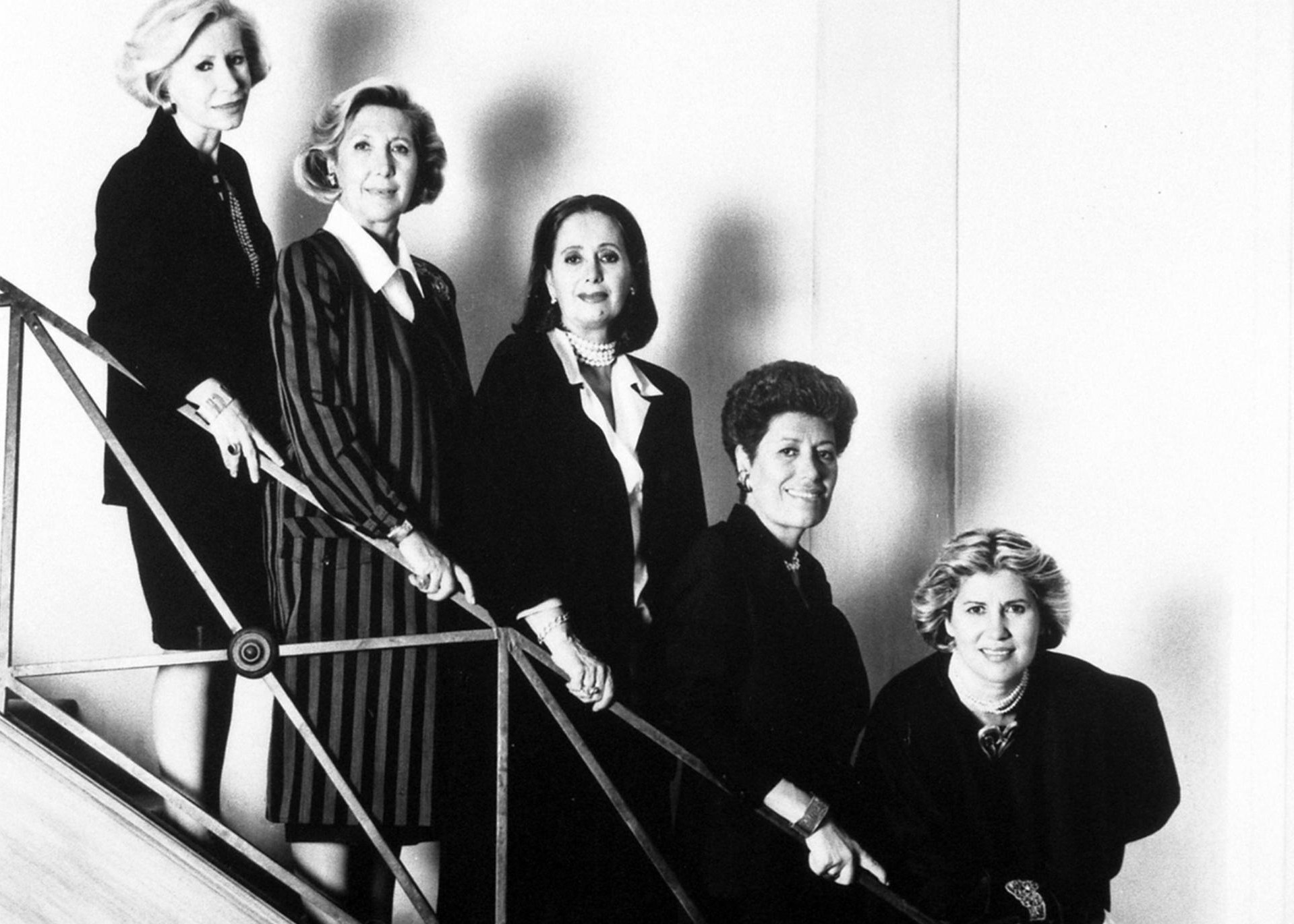
 Patricia Gatto Puglia
Patricia Gatto Puglia
Italian lifestyle and fashion: The sisterhood behind the Fendi fashion dynasty
- WTI Magazine #116 Jun 15, 2019
-

 Patricia Gatto Puglia
Patricia Gatto Puglia
Family business dynasties abound in the luxury Italian fashion sector. There are the Zegnas, the Ferragamos, the Versaces, the Della Valles, the Benettons and others, but the Fendi dynasty – including the five Fendi sisters – has been a nearly all-female-run operation from the start.
An enduring brand
That makes Fendi stand out. The Sorelle Fontana, an Italian fashion sisterhood that had its heyday in the post-World War II years, dressing movie stars and well-heeled women around the world, was also in the all-female camp. But the Sorelle Fontana brand did not endure. The Fendis have had impressive staying power and the marketing savvy to steer their company through the torrents of luxury fashion, while introducing innovations and blockbuster designs synonymous with luxury and meticulous detail. In Fendi’s case, the winning formula has been the interplay between sophistication and sometimes irreverent touches that have captured the attention and pocketbooks of devotees.
With a little help from Fendi friends
Notable alliances have helped Fendi become a household name. There was the 1965 link with Karl Lagerfeld who provided Fendi with creative direction and also designed its double-F logo. Sarah Jessica Parker’s Sex and City character, Carrie Bradshaw, loved her purple-sequined Fendi Baguette so much (the purse takes its name from the shape of a French loaf) that she sparked a buyers’ frenzy for this so-called “It” bag – the moniker given to luxury handbags that were so famous that they could be identified by a single name. Fendi relaunched its iconic Baguette this February with the help of Carrie and Jessica.
There have been other celebrity affiliations such as catering to the Kardashian-Jenners obsession with Fendi, including the $12,500 Fendi-logo covered stroller Kylie Jenner used for her daughter Stormi Webster, not to mention Kim Kardashian’s choice of Fendi for head-to-toe fashion, as well as her endorsement of the also recently relaunched Fendi Peekaboo handbag. This May, Italian fashion influencer/tastemaker Chiara Ferragni (she has more than 16 million Instagram followers!) also boarded the Peekaboo/Fendi marketing train, along with her Italian rapper husband, Fedez. The Fendi messaging is consistently on point: Says Ferragni: "For me Fendi means heritage, craftmanship but at the same time innovation and modernity."
Then, of course, there was LVMH’s 2001 acquisition of Fendi (the French-owned luxury brand conglomerate had approximately 46.8 billion euros in annual revenue in 2018), which gave the Italian company the corporate muscle and platform to build a global position. Fendi had embarked on international expansion well before the LVMH investment, but it currently has nearly 250 boutiques worldwide listed on its website.
The legacy of Made in Italy quality
Beyond the astute alliances, “good bones” are the foundation of Fendi’s enduring brand – and the same can be said of the many Made in Italy labels that are dedicated to craftsmanship and provenance. The Fendi legacy began humbly – a family-owned leather and fur store/workshop in Rome. Adele Casagrande, the founder of the house of Fendi, opened the store in 1918 and changed its name to Fendi when she married her husband, Edoardo Fendi, in 1925. Adele and Edoardo lived above the store on Via del Plebiscito and built their business from the ground up. Soon, they would have five daughters, all born within about two years of each other. First came Paola in 1931, then Anna, Franca, and Carla, followed by Alda, the youngest Fendi, born in 1940. The shop doubled as the sisters’ playground because of the long hours their parents kept. It was also the place where they learned about the craft and the business. Adele was so devoted to her work and aesthetics that she is said to have always dressed her daughters in black, blue and grey, insisting that even children must have an air of sophistication. None of them seemed to mind.
Each sister would begin working at the shop when she was a teenager, all formally entering the business in 1964. Together, they transformed the brand. Their fresh take on design pushed boundaries especially when it came to fur; they used it in unexpected, playful ways, literally lightening the weight of standard fur coats, and lifting them out of the staid, matronly category.
Division of labor
The sisters took on different aspects of the family business. Carla, who died in 2017, was affectionately called “the General” because she was the “mastermind of the brand’s commercial success,” said her New York Times obituary. She was responsible for the public face of the company, its operations, communications and marketing. Roles and responsibilities shifted over the years, but Anna was considered to be the most creative of the sisters and headed design development. In later years she was the force behind Fendi Casa. Paola was expert in furs, Franca was buyer and customer relations manager, and Alda directed sales and the fur atelier. In 1965 the sisters had struck an alliance with Karl Lagerfeld who remained Fendi’s creative director until his death in 2018. So devoted were Adele (she died in 1978) and the sisters to Lagerfeld that he was often referred to as the sixth Fendi child. The sisters moved Fendi to the area around Rome’s Spanish Steps and expanded their products beyond traditional leather and fur into ready-to-wear clothing, perfumes, shoes and children’s clothes.
The sisters had eleven children between them (Carla did not have any children) and 30 grandchildren. In a bow to the stature of the Fendi brand in Italy, the Italian government granted a special dispensation to the Fendis that would allow the sisters’ descendants to adopt their maternal surname. Thus, we have Silvia Venturini Fendi, the daughter of Anna Fendi, and the only direct descendent of the Fendi sisters who continues to work in the family business. Silvia is a design powerhouse. She heads the accessories and menswear lines and created both the Baguette and Peekaboo bags. She frequently collaborates with her daughter Delfina Delettrez Fendi, a jewelry designer. (Delfina has made it a point not to use the Fendi name in her own collections, wanting her success to stand on its own merits.)
Forever Fendi
The idea of coming full circle – not as closure but as a continuum – is something you come away with when you dig into the Fendi history. In that vein, it is fitting that this April Fendi launched its Forever Fendi timepiece collection in Rome at its recently renovated (2016) Palazzo Fendi, the brand’s largest flagship boutique which also houses a boutique hotel with seven suites decorated in Casa Fendi splendor. Silvia Venturini Fendi said the Forever Fendi Policromia watch she jointly designed with her daughter, Delfina, is her favorite for daily wear.
And so, the strong bonds and collaboration between generations continue. Anna Fendi, now the proprietress of the 21-room Villa Laetitia residence in Rome, the palazzo she painstakingly restored to its 1911 glory, said it best as she mused about her life and her sisters: “We were all united like the five fingers of a hand. Each of us was very different but we complemented each other and saw problems from different angles.” The Fendi journey goes on with different Fendi hands at the helm, but no doubt with the same legendary vision.